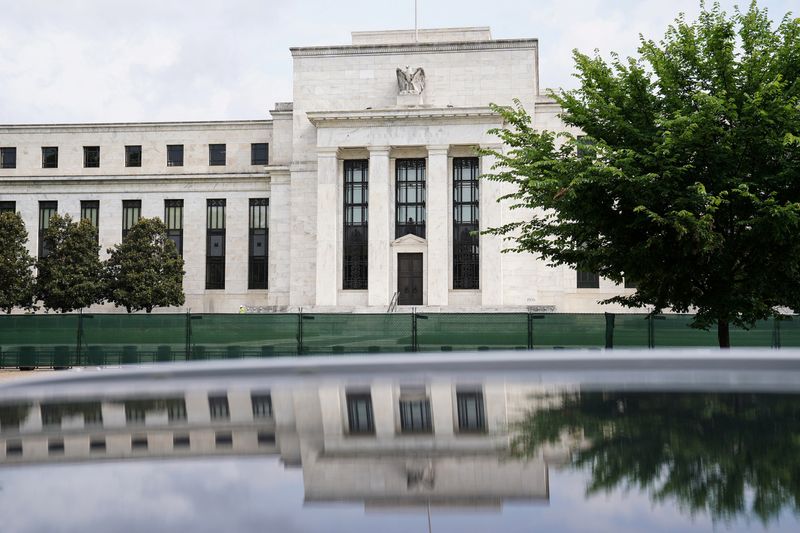By Yasin Ebrahim
Investing.com -- The Federal Reserve delivered its third consecutive 0.75% rate increase on Wednesday and showed no sign of easing its push into restrictive territory as it battles to cool the embers of inflation.
The Federal Open Market Committee raised its benchmark rate to a range of 3% to 3.25% from 2.25% to 2.5% previously.
Following the latest rate hike, the Fed has now lifted its benchmark rate by 300 basis points, or 3% in just six months as the central bank accelerates policy to restrictive territory with the aim of slowing growth enough to make a meaningful dent in inflation.
"We've just moved into the very, very lowest level of what might be restrictive [territory]," Powell said in the press conference that followed the monetary policy statement. "In my view, there's a way to go."
The Fed now sees its benchmark rate rising to 4.4% in 2022, above the 3.4% forecast in June, paving the way for further front-loading of rate hikes in the remaining two Fed meetings for the year and into 2023.
The central bank previously signaled that rates would peak at about 3.8% in 2023, with cuts likely to follow in 2024, but now the central bank is preparing to keep rates higher for longer.
Rates are now expected to reach 4.6% in 2023. In 2024, the voting Fed members forecast rates dropping to 3.9%, though that is still higher than the prior forecast of 3.4%.
The Fed’s hawkish stance has many convinced that the possibility of a hard landing, or recession won’t be enough to deter the central bank from persisting with tightening.
"We have always understood that restoring price stability while achieving a relatively modest increase in unemployment and a soft landing would be would be very challenging," Powell added. "Nonetheless, we're committed to getting inflation back down 2%."
The projections from the Fed's summary of economic projections appear to support Powell’s stance as inflation was revised higher and growth lower.
The core personal consumption expenditures price index, the Fed’s preferred measure of inflation, is forecast to climb to 4.5% in 2022, up from a prior forecast of 4.3%. For 2023, inflation is estimated to drop to 3.1%, compared with the prior forecast of 2.7%, while in 2024 inflation expectations are unchanged at 2.3%.
"Inflation remains elevated, reflecting supply and demand imbalances related to the pandemic, higher food and energy prices, and broader price pressures," the Fed said in a statement.
Fed members estimate the economy will grow 0.2% in 2022, down sharply from a prior forecast of 1.7%. Growth forecasts were also revised lower for 2023 and 2024 to 1.2% and 1.7% from 1.7% and 1.9%, respectively.
The Fed believes that the move to restrictive territory will weigh on consumer spending as rising unemployment keeps a lid on wages.
The central bank now sees the unemployment rate at 3.8% at year-end, up slightly from a prior forecast of 3.7%. But labor supply and demand may likely be restored in subsequent years, with unemployment expected to reach 4.4% in 2023 and remain unchanged the following year, according to the Fed's projections. That is above the prior June forecast of 3.9% and 4.1% unemployment in 2023 and 2024, respectively.
As well as rate hikes, the Fed’ balance sheet reduction, or quantitative tightening, plan is expected to further tighten financial conditions. Earlier this month, the Fed ramped up the pace of QT to $95 billion, up from $47.5 billion in June.
For some, the pace of the tightening has increased the risk of the Fed slowing growth by too much, pushing the economy into a deep recession.
“Clearly the risk is stacked towards exacerbating the slowdown into a hard landing. That is by far the bigger risk at the moment, and it increases with every rate raise into this slowing growth environment,” Will Rhind, founder and CEO, GraniteShares told Investing.com in a recent interview.
The threat of an imminent recession, however, remains unlikely, Rhind said, as the economy is “still in good shape, unemployment low, and consumers are still spending money.”
